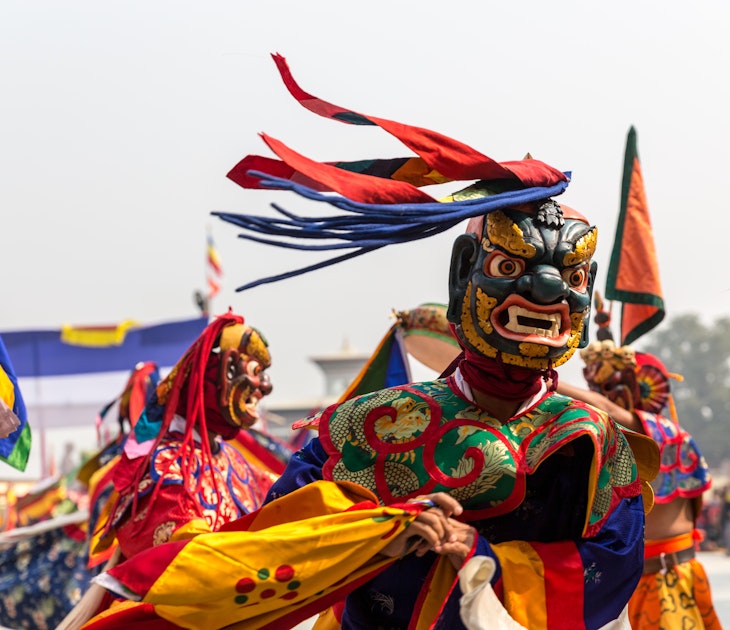

The spaceship-like OCT Creative Exhibition Center, part of the OCT Loft complex © Cathy Adams / Lonely Planet
Just three decades ago, Shenzhen was a drowsy fishing village on the fringe of Hong Kong, across the water in mainland China. Today, it’s one of the country's economic powerhouse cities, at the mouth of the rapidly developing Pearl River Delta region, with over 12 million people calling the city home.
China’s richest city, Shenzhen made its name as the world’s factory floor when it was set up as an economic free zone at the end of the 1980s. In the past decade, the city has transitioned into a tech hub, home to some of China’s most innovative firms.

Shenzhen is also an increasingly creative urban centre. In 2008, it was designated a Unesco Creative City to bolster its reputation in the arts, cementing its pivot from industrial engine to creative capital.
Shenzhen makes an easy day trip from Hong Kong, as well as an interesting city destination within mainland China in its own right. We've rounded up Shenzhen’s best design spots, from cultural hubs to local boutiques.
Design Society
In December 2017, Shenzhen's burgeoning design credentials were crowned by Design Society, a chic white and glass building in the gentrifying port of Shekou. Designed by Pritzker Prize-winning Japanese architect Fumihiko Maki, this design hub – opened in collaboration with London’s Victoria & Albert Museum and China Merchants Group – has galleries, artist studios and a vast public outdoor area. Within its cantilevered glass space, there’s also a gift shop and a cafe.

Design Society isn’t so much a gallery as a creative lightning rod for design in China. ‘Design Society will connect the creative industries of China to the world,’ says Ole Bouman, the society's director – a clear statement of intent that ties with Shenzhen's ambitions to be an art city.
Regardless of its mission, Design Society’s groomed harbourfront park is one of the city’s most pleasant places to relax and take in the views of fast-developing Shenzhen, just across the harbour from Hong Kong.
OCT Loft
Many cities around the world are realising the power of transforming heritage industrial buildings into art ‘villages’. Palm tree-studded OCT Loft in the district of Nanshan is Shenzhen's version: it has wide avenues, a laidback feel and a crop of air-conditioned galleries that make it the ideal place to get to grips with China’s grassroots art scene.

OCT Loft is a sprawling complex of colourful factory buildings, some covered in cartoonish art, that house everything from vast art galleries to little design shops (try IM Loft Shop and quirky Incover). The former industrial area also hosts a range of lively restaurants full of the city's weekenders, such as Malaysian Champor Champor and arty My Coffee alongside a handful of patisseries. When the sun goes down, head to a bar like the Penny Black Jazz Bar, which hosts live music most evenings.
The neighbourhood is anchored by the OCT Art Terminal, the first gallery to set up here in 2005. Hanging in its lofty warehouse space are pieces from both Chinese and international artists. Smaller galleries are hidden down the alleyways that lead off the main street, Enping Jie.

On the first and third weekend of every month, the T-Street Creative Market takes place down the spine of OCT Loft, with local artisans selling everything from quirky smartphone cases and personalised jewellery to Chinese calligraphy and vintage clothing.
Plus, a short taxi ride from OCT Loft is the OCT Creative Exhibition Center, a spaceship-lookalike exhibition centre that has welcomed landmark exhibitions from groups including futuristic visual artists TeamLab in 2017.
In Shenzhen's cloud-brushing Futian business district is the gargantuan Museum of Urban Art and Contemporary Planning (MOCAPE), designed by high-profile Austrian architect Coop Himmelblau. It’s a landmark museum, right next to the Children’s Palace, that forms part of Shenzhen's plan for the city’s new Futian Cultural District.

Opened in 2017, this public art space is as impressively monumental from the outside as it is on the inside: a chrome curve that blends two institutions, the Planning Exhibition and the Museum of Contemporary Art.
Inside, a reflective cloud bubble sits in the curved entrance hall (make sure to snap a selfie in it – surprisingly difficult given the changing angles). The exhibits, currently focused on sculpture in China, are wide-ranging and interactive, if a little sparsely laid out.
Muji Hotel
Japan’s most recognisable design brand, Muji, chose Shenzhen as the location of its first hotel at the end of 2017 and for design aficionados looking to spend the night in China it’s the ideal choice.

In the sleek shopping centre of UpperHills in the Futian district, the Muji Hotel is an elegant timber-fronted low-rise hotel with 79 rooms and a vast Muji shop underneath – China’s largest. There’s also a Muji diner on the ground floor serving Japanese classics. The only downside? It’s swarming with Shenzhen's influencers posing next to the Muji sign.
Make it happen
Shenzhen is just an hour’s subway ride from central Hong Kong, which makes it an easy day trip (it’s also a fast train ride from Guangzhou). Shenzhen is in mainland China, so visitors will need a visa for China to visit. Day visas for Shenzhen can be bought at the Luohu border, depending on the passport that you hold.
https://shop.lonelyplanet.com/products/lonely-planets-best-in-travel-paperback-2019
Explore related stories

Architecture
The ultimate guide to Tibetan Buddhist monasteries: exploring gompas in the HimalayasNov 22, 2024 • 7 min read

 Art and CultureHalloween, Día de Muertos and more spooky festivals around the world
Art and CultureHalloween, Día de Muertos and more spooky festivals around the worldOct 19, 2023 • 5 min read




 Books"Places always surprise me" – Author Porochista Khakpour on traveling during historic moments
Books"Places always surprise me" – Author Porochista Khakpour on traveling during historic momentsMay 26, 2020 • 11 min read


